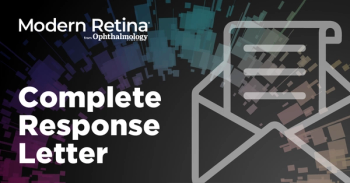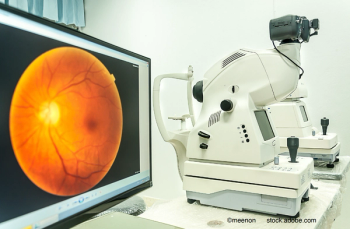
Neovascular AMD and DME therapies: 5 quotes from retina specialists
In recent panel discussions, leaders in the retina space shared their thoughts around AMD and DME. These key quotes showcase the heart of these discussions.
Nathan Steinle, MD, Adrienne Scott, MD; Carl Regillo, MD, FACS, FASRS; and Prethy Rao, MD, MPH, gathered to discuss the diagonostics, treatments, and challenges surrounding neovascular age-related macular degeneration (nAMD) and diabetic macular edema (DME).
In their discussions, they made several key points that can and should be highlighted.
1. "Faricimab will sometimes need to be administered frequently to keep the disease under control." - Carl Regillo, MD, FACS, FASRS
Regillo makes this statement as part of a discussion around switching patients with neovascular AMD from one treatment to Faricimab. He notes that he is switching the perscribed treatment for patients who are not having success with another product. Therefore, it can take more frequent dosing at first to have the desired drying effect and manage the disease. Once more undercontrol, the dosing interval may become longer.
2. "I think gene therapy treatments are the game changers that we really want to be able to offer our patients." - Adrienne Scott, MD
Gene therapy clinical trials are exploring now, potential treatments for nAMD and DME. The retina specialists took time to discuss the value that that gene therapy may being to their practices and their patients. Scott notes that these treatments have the ability to make an impact on patients lives be significantly lowering the treatment burden and having longer term outcomes.
3. "We’re dealing with more of an ocular and systemic disease rather than a purely ocular disease." - Prethy Rao, MD, MPH
The panelists take time to discuss the differences between treating patients with nAMD and those with DME. In this discussion, Rao notes that the two diseases have vastly different challenges, one of those challendges being the DME is not solely ocular, but has a systemic factor. This can mean that the disease may be affected by the way the patient manages their diabetes. There is often a delay in seeking treatment for DME, so patients may be months of years into their condition's progression.
4. "It’s important to follow them regularly so that patient understands that they have to be monitored for their lifetime." - Adrienne Scott, MD
When discussing the treatment goals of nAMD, Scott notes that injections are only one part of the management equation. While treatments can and should be used to preserve vision, monitoring plays a major factor in maintaining vision for years to come. Neovascualr AMD is a lifelong condition, and while treatments can aliveate symptoms and slow progression, there is no cure for the disease, so patients must understand that monitoring and regular exams are key.
5. It seems like every year or two we get either a new therapy or a new approach or thinking that improves our patients’ quality of life, and that’s very exciting. - Carl Regillo, MD, FACS, FASRS
As the panelists conclude their discussion, Regillo notes that he has been in the retina space for some time. Throughout his years of practice, he has seen signigicant advancements in the treatment options available, and he continues to welcome new products and pharmaceuticals. Like the other members of the panel, he shares just how exciting it is to have continued growth in the retina field and to provide patients with an increasing number of solutions that can preserve vision and enhance outcomes.
Newsletter
Keep your retina practice on the forefront—subscribe for expert analysis and emerging trends in retinal disease management.
















































